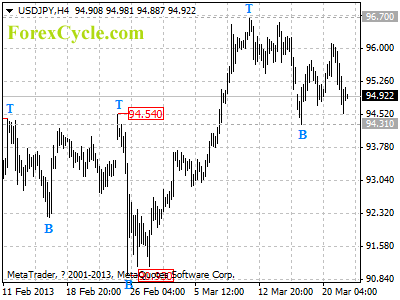Energy: How One Start-Up Thinks They Have
the Answer to Nuclear Power…Using Nuclear Power.
Nuclear is a dirty word. It has undertones of war, disaster, suffering, and horrible atrocity. It’s unfortunate this is the case. But it’s understandable considering the recent Fukushima meltdown and horrible tragedies of the past like Chernobyl.
When you actually look at nuclear technology, the mechanism of using a nuclear reaction to create heat, and subsequently using steam to power a steam turbine is highly effective. Also in terms of reducing carbon emissions and the reliance on fossil fuels, nuclear is a relatively ‘green’ way to go. The huge downside is when things go wrong, they go really wrong!
But now with advances in technology, and some really smart people, there’s an alternative nuclear solution.
A couple of Massachusetts Institute of Technology nuclear science grads and Russ Wilcox (the guy who invented E-Ink, the stuff in your Kindle) have created a company called Transatomic. They’ve designed a new type of nuclear power plant, but not like the 437 in operation worldwide today.
Their innovative plant design uses a Waste-Annihilating Molten Salt Reactor (WAMSR). Basically it uses nuclear waste to create energy by dissolving nuclear waste into molten salt.
Transatomic claim, ‘Conventional nuclear reactors can utilize only about 3% of the potential fission energy in a given amount of uranium before it has to be removed from the reactor. Our design captures 98% of this remaining energy.’
Using existing stockpiles of nuclear waste, Transatomic believe there’s the potential for an additional $7.1 Trillion of energy per year and electricity to power the world through to 2083!
If this design becomes reality it means more power, reduced radioactivity and highly increased safety. But the next step for the team is to get the required funding to now actually build a plant.
It might be in an early stage, but so far there’s no one else in the world with a safer and more efficient design for nuclear power.
Gold: Why High Commodity Prices Doesn’t Mean High Stock Prices
Our in-house technical analyst, Murray Dawes, showed us an ugly looking chart yesterday. It’s the price of Newcrest Mining [ASX: NCM] (black line) compared to the gold price (blue line):
We guess it shows you that a high commodity price on its own won’t guarantee a high share price for companies dealing in that commodity. Another example is Woodside Petroleum [ASX: WPL] and the oil price:
The oil price has stay high, yet the Woodside share price has slumped…although it has recovered somewhat over the past year or so.
The issue of high commodity prices and low stock prices is a subject we covered in the latest issue of Australian Small-Cap Investigator. We argued that stocks need a number of factors to fall into place in order to get a stock surge. For instance, in order for stocks to surge from 2003 to 2007 the market needed three things to fall into place:
- Chinese economic growth
- Credit expansion
- Rising commodity prices
If any one of those was absent in 2003 it’s possible you wouldn’t have seen stocks go up so much. You only have to look at the stock market over the past five years to see how when any one of these is lacking it leads to a choppy market.
Sure, China continues to grow, but not at the break-neck speed seen 10 years ago. Yes, there has been credit expansion, but it has been government-led money printing rather than consumer-led demand. More often than not the government doesn’t spend money in the right places, which means the economy doesn’t get the full benefit.
Finally, you have seen rising commodity prices, but it hasn’t been across the board. You’ve seen falling commodity prices too. Look at gold, iron ore, and natural gas. The volatility in commodity prices creates caution among investors. Unlike the 2003-2007 bull run, investors aren’t sure whether current price rises will last.
You can’t blame them after the huge falls in 2008.
But we’re taking a different view…a contrarian view. We believe that over the next 12 months investors will start to shift from dividend-paying stocks into growth stocks.
That will come on the back of Chinese growth; expanding credit as the money flows into the Australian financial system; and rising commodity prices as the underinvestment in resources projects in recent years causes a strain on supply.
All this, plus the demand among investors for growth, should see a new stock market boom that will at through until at least 2015…when the S&P/ASX 200 will match its previous high of 7,000 points.
Technology: Why Time Travel Is (Technically Speaking) Closer Than You Think
The Concorde had its final flight on 26th November 2003. Since then, aerospace behemoths like Boeing have claimed they have the successor to the Concorde in the pipeline. None have succeeded so far.
But don’t forget we’re in the middle of a new ‘Space Race’. Savvy companies are not only looking at the commercial possibility of craft to fly to space. They’re also looking at how to use the technology for travel on earth.
Regardless, we’re yet to have another commercial passenger jet capable of safely flying supersonic across the globe. One of the main reasons is there simply hasn’t been the proven, safe technology to justify a speed in excess of 1,236kph (Mach 1).
You see, when travelling at many times the speed of sound, in this case 6,180kph (Mach 5), a big problem is air flow. At that speed, the compression of air into the engine creates a tremendous amount of heat. In excess of 1,000 degrees Celsius! With temperatures that hot, it melts the metals and circuitry in a typical jet turbine.
Reaction Engines, a British engine manufacturer, have invented and tested a world first new engine capable of supersonic speeds. It’s called the Synergetic Air-Breathing Rocket Engine (SABRE). There is one key difference in Reaction’s engine compared to a normal jet engine. The SABRE has a heat exchange, a ‘precooler,’ that cools down the compressed air from 1,000 degrees to minus 150 degrees in 1/100th of a second.

Cooling down the air in the precooler (the blue section above) allows the engine to be run fast, efficient and safe. This is game-changing technology in the development of jet engine propulsion.
‘We’re looking at a revolution in transportation equivalent to the jet engine, access to space, access to anywhere in the world within 4 hours.’ – Founder and Chief Engineer Alan Bond.
Reaction is focused on two goals:
- Using the SABRE engine for a reusable plane/rocket for the space industry.
- Using a scaled down version of the SABRE, called the Scimitar, for high speed, supersonic terrestrial aircraft.
Their work has drawn the attention and approval of the European Space Agency (ESA). Currently they’re in development in a European Union 50% funded project called ‘Long-term Advanced Propulsion Concepts and Technologies’ (LAPCAT). The aim of this project is to reduce the duration of antipodal (opposite sides of the earth) flight to less than two to four hours.
Factoring in time differences, it’s mind blowing to think that you could leave Sydney in the morning and arrive in London technically before you left Sydney…so is this the first example of time travel? We think it might be.
Health: Could Robo-Rehab be the Answer to Healthcare Problems?
A study from the University of Massachusetts is proving that using robots in the rehabilitation of stroke patients is a practical method of treatment.
Usually stroke victims receive intense ongoing physical therapy and rehab. This helps them regain mobility and quality of life. The problem is there aren’t enough rehab therapists to meet demand.
Sadly this means many patients don’t receive the rehab they need. They then have great difficulty in daily tasks, often fall into depression, lose touch with their communities and end up in care facilities.
However with the advancement in robotics, in particular humanoid robotics, researchers have found that robo-rehab works.
Excitingly their results show patients respond as well, and sometimes better, to rehab with robots than humans. By using humanoid robots to assist with rehab in the home environment, patients stay out of busy care facilities. They also engage with the community more and have a much better overall quality of life.
So this poses some interesting questions. Why do we seem to respond better to robots than other people? Do we respond better due to the perception robots do not have emotion or ‘intelligence’?
To some extent a study by the Mississippi State University answers this question. In this test researchers showed 100 ‘witnesses’ a crime being committed. One group of 50 was interviewed by a human and the other 50 by a NAO robot (You can read more about NAO here). They asked the groups the same questions about the crime, and intentionally introduced new false information.
The result? The NAO interviewed group were 40% more accurate with their recollection of the crime than those interviewed by a human.
This goes a long way to proving that people can be subconsciously influenced by the perception of other people when under instruction. Introducing a robot as part of the process, people appear to be more open and responsive to their instruction.
Results from studies like these give more credence to the use of robotics in health care situations. The benefit is the longer term well-being of our communities. It means people could stay at home longer and be more active within the community, which means putting less strain on the health care system.
It’s not so crazy to think we could each have our own humanoid robot at home to help take care of our medical needs. Surely that’s a good thing for the future of health care systems.
Our old pal, Diggers & Drillers editor Dr Alex Cowie, has spent the past week in Hong Kong. He attended the Mines & Money conference.
It’s a big event. Based on the dispatches he’s sent back, it sounds as though he’s got a bunch of information out of it that he’s sure to share with his Diggers & Drillers subscribers.
So, what is the outlook for the mining sector?
Here’s the text of an email the Doc sent me earlier this week:
‘The conference starts in earnest tomorrow [Wednesday]. Today was a smaller affair just focusing on precious metals. A bunch of small companies presented but it was mostly explorers with dwindling cash balances looking a bit anxious. Nothing stands out.‘I got my hands on some stats today from Mining Pulse, for my talk – there are 127 junior ASX gold explorers under $20 million. The average cash balance is $1.8m, and the average quarterly burn is $0.6m – so most of them will cease to exist by Christmas unless they raise money. It’s a car crash waiting to happen! Probably explains the long faces today.
‘That said, everyone is saying this is a more cheerful conference compared to the big ones in Cape Town and Toronto so far this year, which were morose affairs.
‘For some reason there was a big focus on diamond explorers, which was odd.’
That tells you something about the rising costs for the Australian mining sector. But it’s not just rising costs for explorers; gold producers have seen costs soar too. The Doc showed that with the following slide in his presentation to the Mines & Money conference:

This explains the performance of mining stocks over the past two years. The S&P/ASX 300 Metals & Mining index has fallen 38.7% since early 2011. There’s even the chance it could fall to the 2008 low. If so, it would see the index fall another 27.3% (a 55.4% fall from the 2011 high point).
So, does that suggest it’s a good time to buy resources stocks, or a bad time? We’ve got our view. We laid out our reasons in yesterday’s Money Morning…
Kris Sayce and Sam Volkering
From the Archives…
Can This Indicator Predict The Dow Jones Next Move?
16-03-2013 – Kris Sayce
Seven Situations to Watch in the Pacific Currency War
15-03-2013 – Dan Denning
Stock Market Warning: Next Week Could be a Blood Bath
14-03-2013 – Murray Dawes
REVEALED: One Opportunity to Escape Your Mortgage
13-03-2013 – Nick Hubble
UK Property: How You Can Buy a House For Less Than 250 Grand
12-03-2013 – Dr. Alex Cowie






